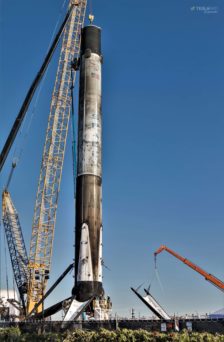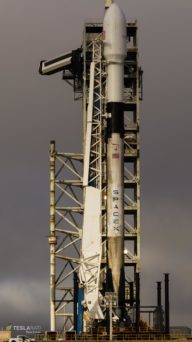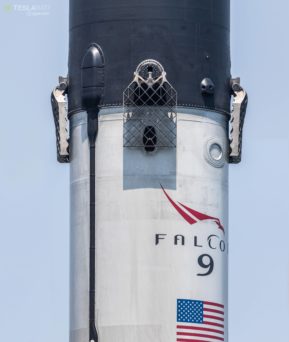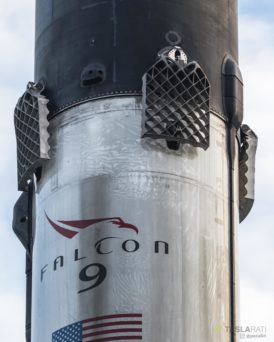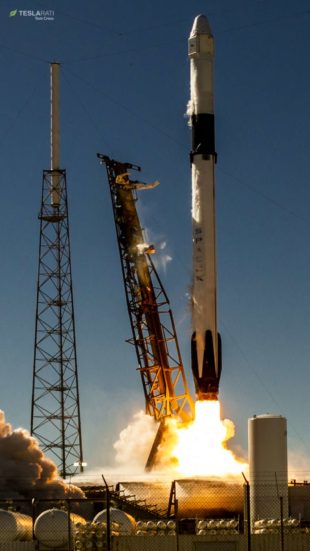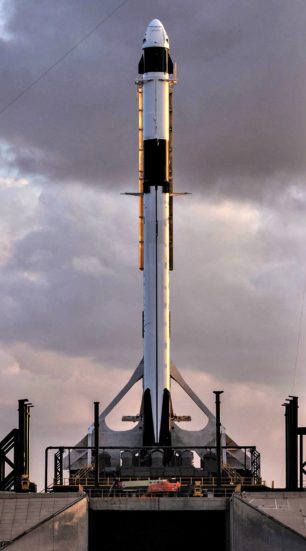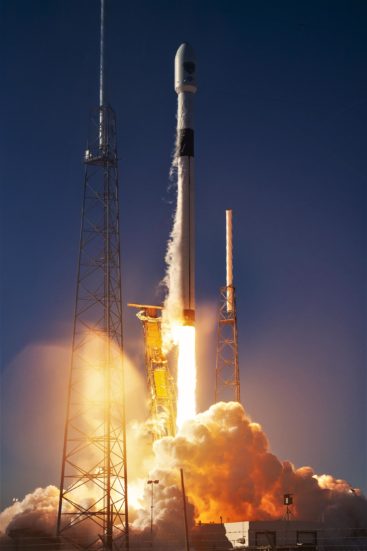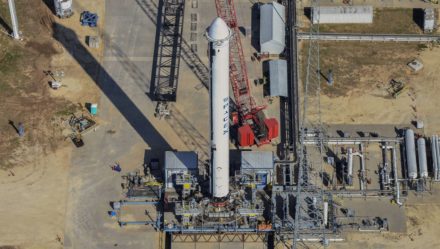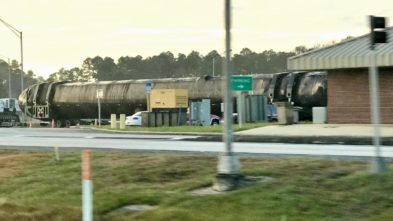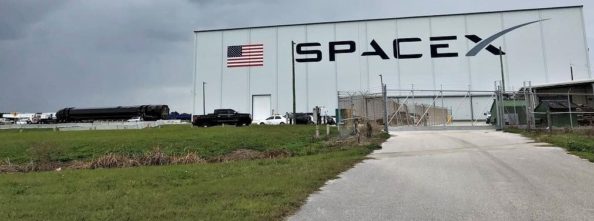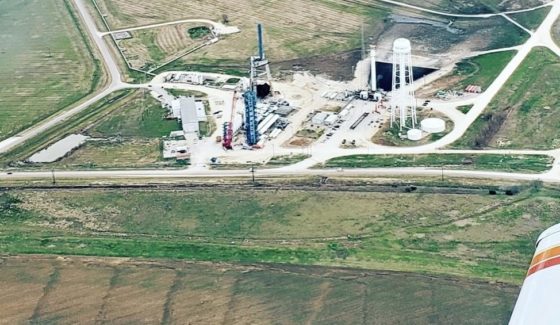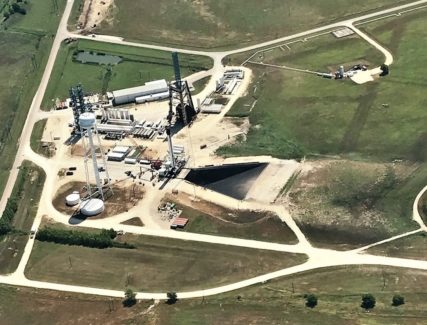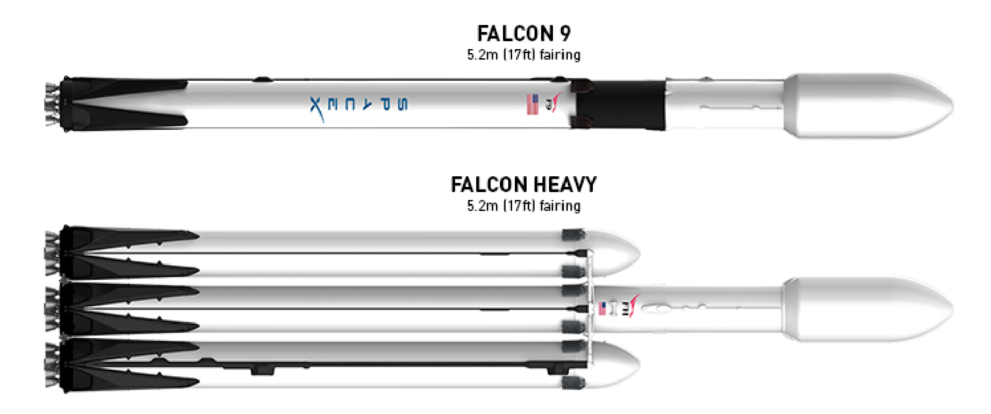
Thanks to a temporary reopening of the US federal government, SpaceX was finally able to continue the process of filing FCC and FAA paperwork needed to acquire permits for upcoming launches, including Falcon Heavy.
One such filing related to the first operational Falcon Heavy launch has revealed a fairly impressive statistic: comprised of three first stage boosters, SpaceX indicated that Falcon Heavy’s center core will attempt to land on drone ship Of Course I Still Love You (OCISLY) nearly 1000 km (600 mi) away from its launch site, easily smashing the record for the greatest distance traveled by a Falcon booster in flight.
Of Course I Still Love You will be positioned a record ~965km downrange. That’s nearly 300km further that the previous greatest distance of 681km, set during the Eutelsat-117WB mission in June 2016. (The landing was a failure, with the booster running out of LOX!) https://t.co/RECKjMtd37
— SpaceXFleet Updates (@SpaceXFleet) January 28, 2019
The same FCC filings also revealed a No Earlier Than (NET) launch date: March 7, 2019. Originally targeted for mid to late February, the complexity and logistical challenges of building, shipping, testing, and delivering two side boosters, a center core, one upper stage, and a payload fairing from SpaceX’s California factory to its Texas test facilities and Florida launch pad unsurprisingly took a small toll on the launch’s aspirational schedule. Nevertheless, if the launch data actually holds to March 7th, SpaceX will not have missed the mark by much considering that this Falcon Heavy – based on new and more powerful Block 5 boosters – is likely a significant departure from the Block 2/Block 3 hardware that has flight heritage from the triple-booster rocket’s Feb. 2018 launch debut.

Just shy of a year after Falcon Heavy’s launch debut, it appears that the rocket’s second and third launches were pushed back by a fundamental lack of production capacity. In other words, SpaceX’s Hawthorne rocket factory simply had to focus on more critical priorities in the 6-9 months that followed the demo mission. At nearly the same time as Falcon Heavy was lifting off for the first time, SpaceX’s world-class production crew was in the midst of manufacturing the first upgraded Falcon 9 Block 5 booster (B1046) and wrapped up final checkouts just 10 days after Heavy’s Feb. 6 launch debut, sending the pathfinder rocket to McGregor, Texas for the first static fire of a Block 5 booster.
In the meantime, SpaceX’s decision to intentionally expend otherwise recoverable reused Falcon boosters after their second launches meant that the company’s fleet of flightworthy rockets was rapidly approaching zero, a move CEO Elon Musk specifically indicated was meant to make room for Block 5, the future (and final form) of the Falcon family. SpaceX’s busy 2018 launch manifest and multiple critical missions for the US government were thus balanced on the success, reliability, and rapid production of a serious number of Merlin engines, boosters, and upper stages. This included B1051 – the first explicitly crew-rated Falcon 9 – and B1054, the first SpaceX rocket rated to launch high-value US military (specifically Air Force) satellites. However, SpaceX also needed to produce a cadre of Falcon 9 boosters capable of easy reuse to support the dozen or so other commercial launches on the manifest.
That gamble ultimately paid off, with Block 5 performing admirably and supporting a reasonable – if not record-breaking – rate of reuse. SpaceX successfully launched B1054 for the USAF, completed B1051 (now at Pad 39A awaiting NASA’s go-ahead), and built enough reusable Block 5 boosters to support nine additional commercial missions in 2018. In hindsight, barring an assumption of a truly miraculous and unprecedented Falcon booster production rate, Falcon Heavy’s next launches were almost guaranteed to occur no fewer than 6-12 months after the rocket’s launch debut – SpaceX’s entire launch business depended on building 5+ unrelated Falcon 9 boosters, while Falcon Heavy customers Arabsat and the USAF were unlikely to be swayed to launch on flight-proven hardware so early into Block 5’s career.
A fresh block 5 booster departing SpaceX HQ! #falcon9 #oversizeload #rocketroad @SpaceX @Teslarati @w00ki33 @13ericralph31 pic.twitter.com/ZKLHnY6iZT
— TomCross (@_TomCross_) October 6, 2018
All cylinders firing
Once Falcon 9 B1054 departed SpaceX’s Hawthorne factory (see above) in early October, it appears that the company’s production team pivoted directly to integrating and shipping the next three (or more) Falcon Heavy boosters back to back for the rocket’s second and third launches. The first new side booster departed the factory in mid-November, followed by a second side booster in early December and a (presumed but highly likely) center core at the turn of 2019. Both side boosters have been static-fired in Texas and are now at SpaceX’s Florida facilities, while the center core either just completed its Texas static fire testing or is already on its way East.
Once the center core and upper stage make their way to SpaceX’s Kennedy Space Center Pad 39A, the company’s technicians and engineers will be able to integrate the second Falcon Heavy to have ever existed in preparation for a critical static fire test. That could occur as early as February, although the launch debut of Crew Dragon (DM-1) – now NET March from Pad 39A after a relentless string of slips – will likely take precedence over Falcon Heavy and could thus directly interfere with its launch, as the launch pad and transporter/erector (T/E) has to undergo at least a few days of modifications to switch between Falcon 9 and Heavy.
Regardless, the next two Falcon Heavy launches will be well worth the wait. SpaceX’s FCC filings indicate that the center core may travel nearly 1000 km (600 mi) East of Pad 39A to land on drone ship OCISLY after launch, smashing the previous record attempt – during the June 2016 launch of Eutelsat 117WB – of ~700 km (430 mi). That Falcon 9 booster – albeit a less-powerful Block 2 variant – was unsuccessful in its landing attempt, running out of oxidizer seconds before landing. Falcon Heavy’s debut center core also happened to suffer a wholly different but no less fatal anomaly during landing, causing it to miss the drone ship and slam into the Atlantic Ocean at almost half the speed of sound (300 mph/480 km/h).
Looks like early liquid oxygen depletion caused engine shutdown just above the deck pic.twitter.com/Sa6uCkpknY
— Elon Musk (@elonmusk) June 17, 2016
Known for their rocket performance estimates, NASASpaceflight forum user “Orbiter” first pointed out the impressive distance – gathered by mapping coordinates included in SpaceX’s Jan. 28th FCC filing – and estimated that the Falcon Heavy center booster flying a trajectory as implied could be traveling as fast as ~3.5 km/s (2.2 mi/s) at main engine cut-off (MECO), the point at which the booster separates from the upper stage and fairing. This would be a nearly unprecedented velocity for any Falcon booster, let alone a booster with plans to land after launch. Falcon 9 MECO typically occurs at velocities between 1.5 and 2.5 km/s for recoverable missions, while even the recent expendable GPS III launch saw F9 S1’s engines cut off around 2.7 km/s.
Whether that MECO velocity estimate is correct, Falcon Heavy’s NET March launch of the ~6000 kg (13,300 lb) Arabsat 6A satellite is likely to be an exceptionally hot reentry and recovery for the center core, while the rocket’s duo of side boosters will attempt a repeat of the debut mission’s spectacular double-landing at LZ-1.


